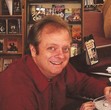James Rada Jr.'s Blog, page 18
March 31, 2016
How did the young lovers die on the eve of their wedding? (part 1)
Author’s Note: I was told this week that this pair of columns, which ran in the Cumberland Times-News last year, won a local column award from the Maryland-Delaware-DC Press Association. Since I like the story, I thought I would share it with those of you who live outside of the Cumberland, Maryland, area.
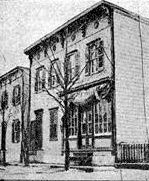
The Elosser home in Cumberland, Md.
January 1, 1911 was supposed to be a special day in the lives of Charles Twigg and Mary Grace Elosser. It was their wedding day. Unfortunately, the night before was their death day.
The discovery of their bodies on New Year’s Eve 1910 was a shock to everyone who knew them. The young couple was happy and in love.
Twigg was a fruit grower from Keyser, W. Va. He was also a widower whose wife had died four years previously and his infant child had died three years ago. Elosser, who was a young divorcee, had seen her own share of sadness in her life.
“Losing his heart to her in the Indian Summer of the last Autumn, his impetuous wooing soon won her for himself,” the New York Times reported.
On the day he died, Twigg arrived in Cumberland to prepare for his wedding. He purchased a wedding ring for his new bride and train tickets to Florida for their honeymoon. He also bought himself a new suit that he planned on wearing to his wedding.
Errands done, he called his fiancée on the phone.
“She laughingly told him that she was up to her eyes in the work of preparation for their marriage on the next day, and did not have a moment’s time for him that afternoon,” the New York Times reported.
He convinced her to meet with him for just a few minutes, though. Tradition says that it is bad luck for the groom to see the bride before the wedding and so it proved to be for these lovebirds.
“Charlie is the best man that ever lived and I am the happiest girl in the world to get such a treasure,” Elosser told one of her close friends on New Year’s Eve.
Twigg arrived early in the afternoon and the couple met in the parlor. Although they were alone, there were plenty of people in the house. Grace’s mother, Anna Elosser, popped in after half an hour to tell Grace that her seamstress for her gown needed to speak with her on the phone.
Twigg talked to his future mother-in-law until his fiancée returned.
“When Grace returned, Mrs. Elosser left, playfully shaking her finger at the couple as they sat cosily on the divan and warning them that time was too precious to spend in loverlike endearments when there was so much in the way of preparation for the wedding,” the New York Times reported.
An hour later, Anna Elosser interrupted them again to find out what arrangements had been decided on their wedding tour.
Grace’s mother told a New York Times reporter, “I knocked on the door with a smile on my face for when I had been in the parlor before both Grace and Charlie Twigg seemed so supremely happy that I could not but smile at the recollection of it. I gave a short knock and entered without waiting a reply. The doorway though which I entered is on the same wall as that against which was the sofa whereon Grace and Charlie sat. I did not fully enter the room, but merely thrust in my head, saying as I did so, ‘Grace, dear, I want to ask you something. You won’t mind my coming in, will you?’
“And then I stopped. There was a silence in the room, a queer, strange silence. Looking towards the sofa I saw the odd, strange attitudes of my daughter and her betrothed. It looked as though they had fallen asleep, but in a most grotesque position.”
Twigg’s head was resting on Elosser’s shoulder. Her head was tilted back staring upward. Their hands were clasped together.
The young couple were dead, but just what had happened?
I’ll post part II next week.


March 14, 2016
History Day at Fort McHenry

Several years ago, on Labor Day weekend, we took the boys to Fort McHenry National Monument and Historic Shrine. I’m embarrassed to admit that I’ve lived in the state of Maryland my entire life and hadn’t visited this gem of a historic site until this day. I’m going to blame it on maybe being sick the day of this school field trip?!?
Fort McHenry was the site of the Battle of Baltimore on September 13-14, 1814. The defense of the Fort inspired Francis Scott Key to write the “Star-Spangled Banner,” our National Anthem. My boys LOVE history and we just thought it was high time our family visited this historic site. We were not disappointed.
A couple notes….as I’m not a huge fan of driving in a large city (still love going to Baltimore), the directions on the park’s website were great. It was fairly easy to get to…
View original post 666 more words


March 10, 2016
REVIEW: Six Frigates by Ian W. Toll
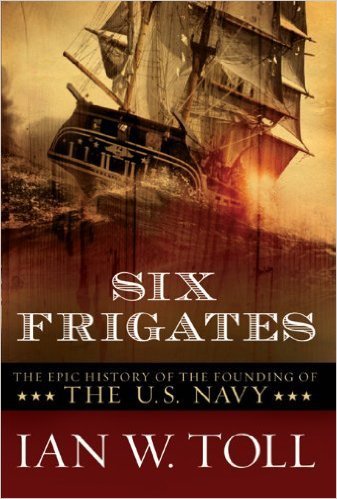 Six Frigates is the story of the creation of the U.S. Navy and it’s a great read. I picked up a copy when I was in Mystic Seaport. It took some time for me to get around to reading it, but once I did, I was fascinated.
Six Frigates is the story of the creation of the U.S. Navy and it’s a great read. I picked up a copy when I was in Mystic Seaport. It took some time for me to get around to reading it, but once I did, I was fascinated.
The Navy was created to defend the young United States from threatening foreign powers. This had been a definite weakness during the Revolutionary War.
Unlike a biography, which you can find for many of the major players in Six Frigates, this is a history of the Navy rather than the people who created it. I thought that this would be a big drawback to the book, but author Ian W. Toll does a good job of balancing personal details with history. You read about political motivations and economic considerations to creating a national fleet.
Six Frigates refers to the first six ships that formed the basis of the Navy. Built by a man who had never designed a warship before, the book begins by addressing the problems the United States faced in actually building the ships.
The story then moves to the sailors and their rocky performance. The book gets really interesting with the tales of the Barbary pirates and the Navy’s battles against them.
It is almost like a coming-of-age story with the Navy playing the part of a teenager. The War of 1812 shows the Navy with its ships built and sailors trained as they set about to defend the country.
This was Toll’s first book. He has since written two more books that are centered around the Navy during WWII. I haven’t read them, though given how much I enjoyed Six Frigates, I will probably buy them at some point.
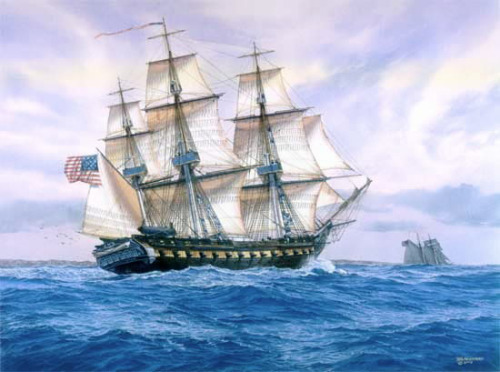
The U.S.S. Constitution


March 3, 2016
The Last Reunion (part 5)
Note: This is the last part of the first chapter from my upcoming book, Clay Soldiers: One Marine’s Story of War, Art, & Atomic Energy draws closer, I thought that I would give you a preview of the book by publishing the first chapter. The story is a biography of Chuck Caldwell, a WWII Marine who fought at Tarawa and Guadalcanal. He also worked in Nevada with the above-ground atomic bomb tests, attended the 75th, 100th, 125th and 150th anniversaries of the Battle of Gettysburg, and is a sculptor of miniature figures that are highly sought after. If you are interested in pre-ordering a copy of the book at a 25% discount off the cover price and free shipping in the U.S., contact me at jimrada@yahoo.com. As always, let me know what you think.

A picture Chuck Caldwell took in 1938 at the dedication of the Peace Light Memorial in Gettysburg, Pa.
That second night in Gettysburg, Chuck and his father slept in a bed in a room in a tourist camp, but Chuck was still awake early in the morning ready to go visiting the veterans’ camp. Many of the tents were empty as their occupants were out touring the battlefield. Among the tents that were occupied, Chuck often found the aged veterans sleeping.
They toured the Union camp first and then crossed the street to the Confederate camp.
“I could hardly wait to get to the Confederate camp because there were so many fewer of them,” Chuck recalls.
During one of his trips to the Confederate camp, young Chuck met O. Richard Gillette, who had served in Davis’s Brigade with the Second Mississippi. Though he fought in a number of major battles during the war, the only time that he was wounded was at the Battle of Antietam.
“A piece of shrapnel hit me in the knee. It didn’t hurt me much, but the worst of it was it ruined my britches,” Gillette told the Gettysburg Times.
The old veteran had lived next-door to Jefferson Davis. Gillette had joined the army when he was fifteen years old. Besides being near where the Confederate troops had pierced the Union line during Pickett’s Charge, he had also seen Gen. Stonewall Jackson mortally wounded during the Battle of Chancellorsville in 1863.
Chuck had his picture taken with the man. Gillette still had his hair, though it was white and thinning. He also had a thick white mustache. Chuck asked him to sign his autograph book. Gillette wrote in it that he had been there at the opening and close of the Battle of Gettysburg.
Gillette invited the Caldwells into his tent and out of the sun. He sat down on his cot and reached a hand under it. He pulled out a stone jug filled with whiskey.
“Would you like a drink?” Gillette offered George Caldwell.
George shook his head. “No, thank you.”
Gillette shrugged and poured himself a glass and sipped it. Then the trio began to talk with Chuck anxious to ask questions about the war of the weathered veteran. In an old newsreel from the reunion, an interviewer has a conversation with Gillette, which more than likely resembled Chuck’s and dozens of others Gillette had during the reunion.
“General Gillette, will you tell us in your own words your experiences during the celebrated Pickett Charge at the Bloody Angle at the Battle of Gettysburg?” the interviewer asks.
“Well, I belonged to Davis Division, that Davis Brigade and we get about ten feet at the slope, then we had to turn. Those that were living had to turn,” Gillette replies.
“What do you mean by turn?”
“Run, run like hell.”
“You don’t mean to say, General Gillette, that soldiers run?”
“Well, if one tells you he didn’t, he’s telling you a damn lie.”
Later in the day, Chuck and his father watched the thirty-unit parade through Gettysburg that ended at the stadium where the Civil War veterans reviewed the modern military men and their equipment. The parade included drum and bugle corps representing the major veteran organizations in the country and many of the states that had troops at the Battle of Gettysburg. Interspersed between the drum and bugle corps were regular army units representing infantry, tanks, anti-aircraft, field artillery and cavalry. Other units of the armed forces also had units in the parade. With all of the men and equipment, the parade stretched out for three miles between the reviewing stand at the college and the intersection of Baltimore Pike and Emmitsburg Road. It took two-and-a-half hours for everything in the parade to pass.
The next day was the Caldwells’ last full day in Gettysburg, Chuck once again spent time walking through the camps looking for veterans with whom to speak. By the end of the day, he would have nearly fifty autographs from Civil War veterans in his book along their basic information and picture.
During the afternoon, veterans shook hands across the stone wall at The Angle. The same thing had been done at the fiftieth anniversary reunion in 1913, and one couldn’t help but notice that there were far fewer veterans around to participate in it in 1938.
The big event of July 3 was the dedication of the Peace Memorial with its eternal flame, which stood on the hill northwest of the veterans’ camp.
President Franklin D. Roosevelt arrived by train at a temporary platform next to the Confederate camp and was escorted in a car to the memorial where more than 200,000 people waited.
Chuck and his father were in the crowd not too far away from the memorial. The weather was hot, feeling even more so because of the tightly packed bodies. Many people stood for hours waiting to hear the president speak, and at least a half dozen people had to carried away to get medical care after they collapsed from heat exhaustion.
The president spoke less than ten minutes. Among his comments he noted, “In later years, new needs arose and with them new tasks, world-wide in their perplexities, their bitterness and their modes of strife. Here in our land we give thanks that, avoiding war, we seek our ends through the peaceful processes of popular government under the Constitution.” He concluded his remarks by accepting the monument on behalf of federal government “in the spirit of brotherhood and peace.”
“The Star-Spangled Banner” started playing as two rope that reached to the top of the monument hidden within a fifty-foot-long American flag were pulled. Then the flag slowly came down to be caught by George N. Lockwood, Confederate A. G. Harris, and two regular army attendants. Lockwood was a ninety-two-year-old Union veteran from Los Angeles and Harris was ninety-one-year-old Confederate veteran from McDonough, Georgia. Both men wore the uniforms of their respective armies as they performed their solemn duty.
Following the dedication, the U.S. Army staged a simulated air raid on Gettysburg that included forty-eight aircraft from light attack planes to large bombers. Searchlights on the ground were directed up at the planes as they dropped flares.
The military demonstration continued with tank maneuvers by the Sixty-Sixth Infantry Provisional Tank Battalion near Glatfelter Hall on the Gettysburg College campus.
Once night fell, fireworks were launched from the crest of Oak Hill.
Chuck fell asleep that night exhausted, but he knew that over the past three days he had seen something special and he had been a part of history. That was what he wanted in life.
[1] Author interview with Chuck Caldwell.
Unsigned article, “Here and There With the Veterans,” The Gettysburg Times, July 1, 1938, 1.
Unsigned article, “Blue and Gray Relive Battle In Memories,” Syracuse Herald, June 30, 1938, 1.
Author interview with Chuck Caldwell.
Author interview with Chuck Caldwell.
John McDonough, “Remembering Last Reunion of Civil War Veterans,” http://www.npr.org (http://www.npr.org/templates/story/story.php?storyId=106259780) accessed August 27, 2015.
Stan Coben, Hands Across the Wall: The 50th and 75th Reunions of the Gettysburg Battle (Charleston, WV: Pictorial Histories Publishing Co., 2011) pp. 44.
Unsigned article, “President Roosevelt Dedicates Eternal Light Memorial to Cause of Peace Before 200,000 as Climax to 75th Anniversary of Civil War Battle,” The Gettysburg Times, July 4, 1938, 1.
Unsigned article, “Text of President’s Address at ‘Peace Light’ Dedication,” The Gettysburg Times, July 4, 1938, p. 1.
February 25, 2016
The Last Reunion (part 4)
Note: As the publication of my new book, Clay Soldiers: One Marine’s Story of War, Art, & Atomic Energy draws closer, I thought that I would give you a preview of the book by publishing the first chapter. The story is a biography of Chuck Caldwell, a WWII Marine who fought at Tarawa and Guadalcanal. He also worked in Nevada with the above-ground atomic bomb tests, attended the 75th, 100th, 125th and 150th anniversaries of the Battle of Gettysburg, and is a sculptor of miniature figures that are highly sought after. If you are interested in pre-ordering a copy of the book at a 25% discount off the cover price and free shipping in the U.S., contact me at jimrada@yahoo.com. As always, let me know what you think.
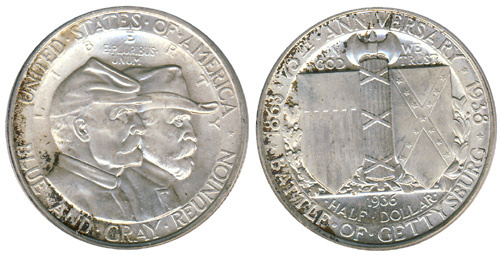
The limited-circulation half=dollar coin issued in honor of the 75th anniversary of the Battle of Gettysburg
For some, Gettysburg held such a special place in their hearts and minds that they wanted to die on the battlefield. William W. Banks, a veteran who served with Company H, 18th Alabama Infantry, sent the Quartermaster General of the United States a telegram saying that he represented a group of veterans “do desire to remain here on this hallowed hill till Gabriel shall call us to that eternal party where there is no strife, bitter hate, nor bloodshed and we are one for all and all for one.”
Because of his father’s efforts to help Chuck meet living Civil War veterans, Chuck had actually met some of these men before, especially if they lived fairly close to Orrville. While those meetings stuck out in his young memory, the veterans rarely remembered meeting one particular young boy for a few minutes.
“They were close to 100 years old,” Chuck said. “They wouldn’t remember a little kid.”
One young attendee names John Stonesifer remembered the veterans as being grumpy without much to say.
That didn’t stop Chuck from approaching each veteran whom he could find. He carried his Brownie camera and an autograph book and looked more like a cub reporter than a tourist.
He would introduce himself and ask the veteran to sign his name and write the outfit that he had served in during the war and his hometown. Chuck also asked his father to take a picture of the veteran and Chuck. The brown-haired and brown-eyed Chuck looks very young in the pictures standing around five feet tall and as thin as a rail. He would be asking the veteran and questions he could think of whether it was about a particular battle, military life, or their life after the war.
One of the men whom Chuck met was John C. Smith of Meridian, Mississippi. The 108-year-old veteran had fought with the 46th Georgia as the Confederates charged Little Roundtop at Gettysburg.
“Somewhere in that furious charge across the valley, a spent bullet thudded into Smith’s cheek and he spit it out into his powder-blackened hand and went on to fight across the hill top and, finally, to give up up to the Union reforcements,” The (Circleville, Ohio) Daily Herald reported.
Chuck was enraptured with the stories the veterans told him and he could have listened to them for days on end. However, his camp tour was somewhat hampered by rain in the late afternoon and evening of Friday, July 1. Though the rainfall kept the temperature down, it also sent many people indoors. When the rain started, the camp headquarters sent a truckload of umbrellas to the veterans’ camp. More than 2,000 umbrellas were distributed to veterans so they could continue touring the town in buses that were also provided by the camp headquarters.
One of the first veterans whom Chuck met during the reunion was ninety-one-year-old Henry Rogers of Santa Monica, California. Rogers showed off his patriotism during one of the bus tours on the battlefield when he stood up and recited Lincoln’s Gettysburg Address to the cheers of the other riders on the bus who were nearly all Civil War veterans themselves.
Rogers had served as a dispatch orderly with the Fortieth Illinois Infantry during the war. Three of his brothers had also served in the same company. During the Battle of Kenesaw Mountain in Georgia on June 27, 1864, Rogers and his brothers had charged against a regiment of which their uncle was a soldier.
Rogers’ wife, Elizabeth, had accompanied her husband to the reunion and served as his attendant. She was seventy-eight years old, but still in good enough health to take care of her husband and serving as his attendant allowed them to share the same tent in the veterans’ camp. Chuck struck up an acquaintance with Rogers corresponded with the aged veteran until he died on November 20, 1938.
The big feature of July 1 was the opening ceremony at the Gettysburg College Stadium at 2 p.m. featuring U.S. Secretary of War Harry H. Woodring as the main speaker. One of the other speakers during the ceremony was the Rev. John M. Claypool of St. Louis, another one of the veterans whom Chuck met and had sign his autograph book. Claypool was the commander of the United Confederate Veterans and a descendant of John Hancock.
During his remarks, which were broadcast over national radio, Claypool good-naturedly noted that if the South hadn’t surrendered in 1865, it would have continued fighting using guerilla warfare still today, but Southerners had been too high-minded to continue fighting a lost cause.
“We can’t hold anything against each other,” Claypool said. “I speak as the representative of real Americans and as a real American myself. God bless you all.”
[i] Unsigned article, “Veteran Asks Permission to Remain at Gettysburg Until ‘Gabriel Shall Call Us’,” Unknown publication, July 7, 1938. This newspaper clipping is part of the 75th anniversary folder in the vertical files of the Adams County Historical Society.
Author interview with Chuck Caldwell.
Abbey Zelko, “Gettysburg tourist recalls experience at 75th anniversary: Gettysburg 150,” PennLive.com (http://www.pennlive.com/midstate/index.ssf/2013/06/gettysburg_tourist_recalls_exp.html) accessed January 7, 2015.
Author interview with Chuck Caldwell.
Unsigned article, “Veterans of North and South Recall Gettysburg,” The (Circleville, Ohio) Daily Herald, June 30, 1938, 3.
Unsigned article, “Here and There With the Veterans,” The Gettysburg Compiler, July 9, 1938, 4.
Unsigned article, “Here and There With the Veterans,” The Gettysburg Times, July 1, 1938, 1.
Unsigned article, “Here and There With the Veterans,” The Gettysburg Times, July 1, 1938, 1.
Unsigned article, “Here and There With the Veterans,” The Gettysburg Compiler, July 9, 1938, 4.
Unsigned article, “Here and There With the Veterans,” The Gettysburg Compiler, July 9, 1938, 4.
February 18, 2016
The Last Reunion (part 3)
Note: As the publication of my new book, Clay Soldiers: One Marine’s Story of War, Art, & Atomic Energy draws closer, I thought that I would give you a preview of the book by publishing the first chapter over the next few weeks. The story is a biography of Chuck Caldwell, a WWII Marine who fought at Tarawa and Guadalcanal. He also worked in Nevada with the above-ground atomic bomb tests, attended the 75th, 100th, 125th and 150th anniversaries of the Battle of Gettysburg, and is a sculptor of miniature figures that are highly sought after. If you are interested in pre-ordering a copy of the book at a 25% discount off the cover price and free shipping in the U.S., contact me at jimrada@yahoo.com. As always, let me know what you think.With the seventy-fifth anniversary of the Civil War beginning in 1936, many newspapers started running features about the veterans who lived in their circulation areas. The articles allowed the veterans to recount their war-time experiences from seventy-five years earlier. Chuck had read as many of the articles as he could find so he had been overjoyed to find out that he and his father would be traveling to Gettysburg for the last, great anniversary.
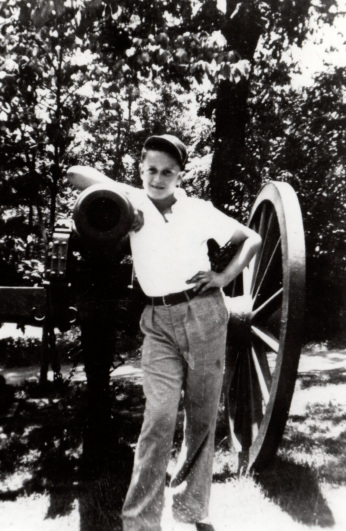
Fourteen-year-old Chuck Caldwell on the Gettysburg Battlefield in 1938.
Most of the veterans had arrived earlier the same day that Chuck and his father had arrived on twelve special Pullman trains. Some of them were so frail that they had to be carried off of the trains on stretchers.
The Gettysburg that the Caldwells drove into in 1938 was a much larger town than the Gettysburg of two years prior. Not larger in terms of size, but in the number of people. Cars crept along the roads, bumper to bumper. Tents were pitched in open fields forming small communities. People clustered tightly on sidewalks, reminding Chuck of pictures he had seen of big cities like New York and Philadelphia. Many of the people on the sidewalks were probably from those cities and thinking about how uncrowded Gettysburg was.
Because of the expected crowds, the borough had worked to make a good impression on visitors and veterans alike. In the weeks leading up to the reunion, workmen had repaired all of the streets leading into Gettysburg and removed any weeds along the sidewalks. Flags were draped across the streets—Chambersburg, York, Baltimore, and Carlisle—leading from the town square. Business windows were filled with displays about the anniversary. Public buildings were festooned with flags. The borough had even arranged for many of the buildings to receive a fresh coat of paint. At night, the town was lit up with red, white, and blue lights.
The Gettysburg Times reported, “Gettysburg will present its brightest and gayest appearance in 25 years.” One Confederate veteran’s wife said all of the activity and decorations in town reminded her of a huge street carnival.
Tim Murphy of Harrisburg was a big reason for this declaration. Murphy had worked in event promotion and decorating for more than twenty-five years. He had learned showmanship from working with the Barnum and Bailey’s Circus and Buffalo Bill’s Wild West Show. He had also decorated Washington, D.C. for the inaugurations of Franklin D. Roosevelt, Calvin Coolidge, and Warren G. Harding. Perhaps most importantly, he had helped decorate Gettysburg for the Grand Reunion of 1913 when 57,000 Civil War veterans had come to Gettysburg to remember the battle and their days in the Blue or the Gray. Chuck’s head swung back and forth anxiously looking for Civil War veterans in the crowd, but he didn’t see anyone whom he could point to and say, “I want to meet him!” Most of the men wore nice suits, though some of them had forsaken their jackets because of the heat. They were far too young to have served in the Civil War. Chuck did see some men in brown uniforms, but they were modern soldiers.
While the Caldwells hadn’t needed to make a room reservation two years ago, this year, each innkeeper, tourist court owner, and motel manager with whom they inquired told them the same thing. They had arrived too late in the day. All of their rooms were filled. Try back around lunch time tomorrow.
With each rejection, it looked like it was less likely that Chuck and his father would find a place to stay for the night at least in Gettysburg. Both of them dreaded getting back in the car to drive on to Biglerville, New Oxford, or Emmitsburg in search of a room.
A farmer saved the day for them. George Caldwell started talking to the man on the street, hoping to get a lead as to where he could find a room in town. The farmer agreed with everyone else that all of the rooms were filled with tourists visiting for the seventy-fifth anniversary of the battle. Then he offered the Caldwells the use of his old chicken coop, which was currently vacant.
That was why Chuck found himself waking up in a chicken coop on July 1, 1938, rather than a bed. He shook his father awake and they washed up in the farmer’s house, changed clothes and drove back into Gettysburg.
One night in a chicken coop had been enough for the Caldwells. George made sure that he took part of the afternoon to revisit the tourist camps and hotels in town until they found a place to stay that offered them a real bed without any ventilation through the floor.
The Civil War veterans weren’t staying in hotels or inns, either. Even though their rooms were tents, they were five-star accommodations compared to a chicken coop.
The veterans’ camp had been constructed on the north end of Gettysburg College and also on some adjacent privately owned property. The Pennsylvania Blue and Gray Planning Commission had decided to house the veterans in tents just as had been done during the 1913 reunion when more than 6,500 tents had been erected in a temporary camp south of Gettysburg. Although far fewer veterans attended the seventy-fifth anniversary reunion, there simply wasn’t enough room for all of them in hotels and constructing wooden barracks would have been too costly.
Planning for the seventy-fifth anniversary reunion had begun in 1935, but men of the Civilian Conservation Corps hadn’t started construction of the camp until April 26, 1938. Leonard Shealer, one the workers who helped build the camp, hauled wood to build the camp boardwalks and tent frames. Once the reunion activities began, Shealer hauled garbage from the kitchen in his truck and also slept there.
Boardwalk streets were laid out in a grid fashion. Union veteran tents were located on lettered streets from Biglerville Road to Mummasburg Road. Confederate veteran tents lined numbered streets from Mummasburg Road to the Reading Railroad. The Confederate and Union sections of the camp were split by Mummasburg Road.
Each veteran was given either a United States flag or a Confederate flag to display in front of his tent if he wanted to do so. Annette Tucker, wife of a Confederate veteran at the reunion, wrote, “At the time I felt so loyal to the Government for making this meeting possible and for all the favors they were bestowing upon us that it didn’t seem proper to display the Confederate flag, not even at the Reunion, even if we were permitted this privilege, so I folded mine to bring home for a souvenir and perhaps use at our own U. D. C. meetings.”
Short wooden walks ran off the streets at right angles leading to the nine-foot by nine-foot tents. Each tent had two cots; one for the veteran and one for his attendant. They had wash stands and electric lights in them. The tents also had rain flys in front of them that offered shade so that the veteran could sit outside and talk to his neighbors or greet passersby by like Chuck.
“It was a thrill to be able to see both armies together at one time. It was just too much. I would have walked from home to be there,” Chuck said.
The men Chuck saw seemed frail in comparison to the soldiers they had been in their youth. Now in their nineties and even their hundreds, their hair, if they still had any, was white along with their sideburns, mustaches, and goatees. Many of them could stand for only short stretches and spent most of their time sitting in wheelchairs supplied by the reunion commission.
Nearly all of them dressed in coats, vests, and neckties. Here and there, one of the veterans would dress in a shabby military uniform that was seventy-five years old. This was their special reunion and their time in the national spotlight. They wanted to make a good first impression with people they met.
Unsigned article, “Plans Completed for Gettysburg’s Big Celebration,” The (Beaver County, PA) Daily Times, June 28, 1938, p. 1.
Annette Tucker, “The Gettysburg Reunion – 1938”, unpublished manuscript at the Adams County Historical Society, p. 3.
Unsigned article, “Flags, Bunting Brighten Town for Battle Fete,” The Gettysburg Times, June 23, 1938, 1.
Annette Tucker, “The Gettysburg Reunion – 1938”, unpublished manuscript at the Adams County Historical Society, p. 3.
Unsigned article, “Flags, Bunting Brighten Town for Battle Fete,” June 23, 1938.
Author interview with Chuck Caldwell.
Stan Coben, Hands Across the Wall: The 50th and 75th Reunions of the Gettysburg Battle (Charleston, WV: Pictorial Histories Publishing Co., 2011) pp. 40-1.
Jess Haines, “95-year-old remembers role in 75th, 1938 reunion,” The Gettysburg Times, June 30, 2012, pg. 1.
Unsigned article, “Many People Visit College During Celebration,” The Gettysburg College Bulletin, October 1938, 2.
Annette Tucker, “The Gettysburg Reunion – 1938”, unpublished manuscript at the Adams County Historical Society, p. 3.
Annette Tucker, “The Gettysburg Reunion – 1938”, unpublished manuscript at the Adams County Historical Society, p. 5-6.
February 11, 2016
The Last Reunion (part 2)
Note: As the publication of my new book, Clay Soldiers: One Marine’s Story of War, Art, & Atomic Energy draws closer, I thought that I would give you a preview of the book by publishing the first chapter over the next few weeks. The story is a biography of Chuck Caldwell, a WWII Marine who fought at Tarawa and Guadalcanal. He also worked in Nevada with the above-ground atomic bomb tests, attended the 75th, 100th, 125th and 150th anniversaries of the Battle of Gettysburg, and is a sculptor of miniature figures that are highly sought after. If you are interested in pre-ordering a copy of the book at a 25% discount off the cover price and free shipping in the U.S., contact me at jimrada@yahoo.com. As always, let me know what you think.
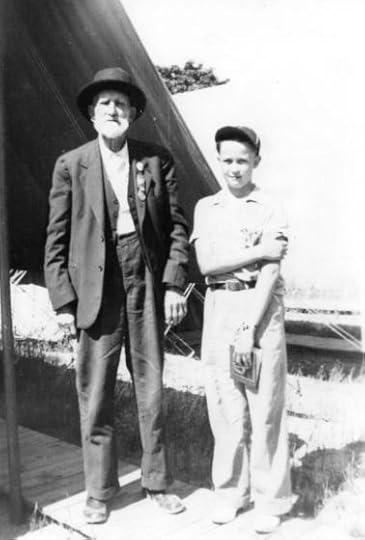
Chuck Caldwell at age 14, posing for a picture with Stephen Howe, a Confederate Civil War veteran, at the 75th reunion of the Battle of Gettysburg in 1938.
When the Caldwells finished their vacation in Gettysburg, they drove further east through York, Pennsylvania, which had served as the national capital in 1777 when the British drove the politicians from Philadelphia, and then through the heart of Amish country in Lancaster County. They finally stopped at Valley Forge. Oddly enough, the Revolutionary War site where Gen. George Washington’s Continental Army had encamped for the winter and suffered through starvation, disease, and malnutrition brought back memories of Chuck’s paper route in Orrville.
Chuck delivered the Courier-Crescent, Orrville’s daily newspaper, tossing papers to front stoops as he pedaled his bicycle through his hometown. On one section of his route, though, he had to dismount his bike and hike up a steep hill past the Crown Hill Cemetery at the intersection of Crown Hill Road and West High Street.
“On winter days, I was always imagining myself at Valley Forge, climbing up this hill in the deep snow and then having the person I was going to see not pay me for the week,” Chuck recalled.
He enjoyed the visit to Valley Forge, but it was the Civil War and the Battle of Gettysburg that stuck in his memory. Part of the reason for his interest in history, and in particular, the Civil War, was that his great-grandfather had fought in the war.
Private Isaac Caldwell had served in the First Tennessee Volunteers as part of Archer’s Brigade. A Union cavalry officers is believed to have fired the first shot in the Battle of Gettysburg at 7:30 a.m. on July 1, 1863. When the Confederate Army was still three miles west of Gettysburg. The Confederate Army halted and sent out skirmishers. Confederate General James Archer’s brigade encountered little resistance at first. Union infantry flanked Archer and caught him by surprise. Archer started a retreat through the woods and across Willoughby Run. Archer and 300 of his men were surrounded and captured. Private Caldwell’s company had marched near the front of the Confederate Army as it approached Gettysburg. Isaac was also one of the early casualties in the battle when he was wounded at Willoughby Run. He had survived the battle and the war, though, unlike thousands of other men.
In the 1930s, those whom the Civil War had not taken were slowly being picked off by time. Isaac Caldwell had died in 1885 and by 1938, only an estimated 8,000 Civil War veterans were still alive out of the more than 3.2 million men who had served in the armed forces. Chuck wished that he could have met all of them. He certainly gave it his best effort, but there was only so much that a fourteen-year old could do.
His father, George, who was the pastor at the Orrville Presbyterian Church, often spoke at other churches or meetings of pastors that were held outside of Orrville. Whenever he did, George would pour through the local newspapers and ask about whether there were any Civil War veterans living in the towns he visited. If there were, George would call them and make an appointment to stop by and get a picture, autograph, and some biographical information about them. Then he would give Chuck the mementos when he returned home.
Family members who knew of Chuck’s interest would save stories about Civil War veterans that popped up in their hometown newspapers from time to time. They would clip them carefully and mail them off to Chuck. He would open the envelopes like they were Christmas presents and read the stories looking for new information and names. Then he would paste the clippings into a scrapbook.
Chuck would often write to the veterans whose addresses he could find. He would pepper them with questions about their service in the Civil War, the battles they had fought, the hardships they had endured, and the training they had received. A good number of the veterans wrote him back. Chuck corresponded with some of them right up until they died.
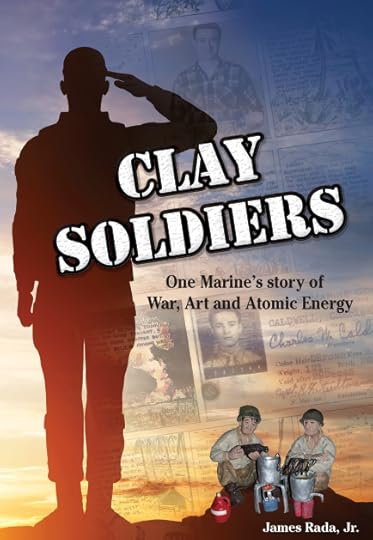
Author interview with Chuck Caldwell.
Author interview with Chuck Caldwell.
Diana Loski, “A World War II Veteran Remembers,” The Gettysburg Experience, July 2014, 25.
Tim Smith, “The First Day at Gettysburg: Then and Now,” Civil War Trust (http://www.civilwar.org/battlefields/gettysburg/gettysburg-2011/gettysburg-then-and-now.html?referrer=https://www.mypoints.com/) accessed October 16, 2015.
Diana Loski, “A World War II Veteran Remembers,” The Gettysburg Experience, July 2014, 25.
Frank N. Britchner Collection scrapbook. Unsigned article. “Camp Aftermath.” The Frank N. Britchner Collection scrapbook is part of the Adams County (Pa.) Historical Society collection. It is part of a donation by a pharmacist who lived in Gettysburg at the time of the fiftieth reunion of the Battle of Gettysburg. The scrapbook is a collection of articles written during the 1913 and 1938 reunions. Many come from the Baltimore American, but many others have been clipped from the newspaper and so the origin is uncertain.
Author interview with Chuck Caldwell.
February 4, 2016
The Last Reunion (part 1)
Note: As the publication of my new book, Clay Soldiers: One Marine’s Story of War, Art, & Atomic Energy draws closer, I thought that I would give you a preview of the book by publishing the first chapter over the next few weeks. The story is a biography of Chuck Caldwell, a WWII Marine who fought at Tarawa and Guadalcanal. He also worked in Nevada with the above-ground atomic bomb tests, attended the 75th, 100th, 125th and 150th anniversaries of the Battle of Gettysburg, and is a sculptor of miniature figures that are highly sought after. If you are interested in pre-ordering a copy of the book at a 25% discount off the cover price and free shipping in the U.S., contact me at jimrada@yahoo.com. As always, let me know what you think.
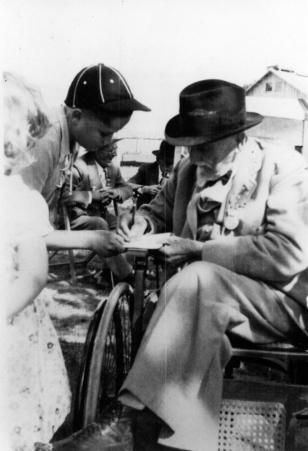
One of the more than four dozen Civil War veterans whom Chuck Caldwell met at the 75th anniversary of the Battle of Gettysburg. He had each one sign his autograph book and have his picture taken with Chuck.
Chuck Caldwell woke in the morning and wondered if he should cluck. The fourteen-year old boy had spent the night sleeping in a chicken coop with his father. Not that the chickens were sharing the drafty wooden building with them. The roosts and nest boxes were empty, but the smell of feathers and feces hung in the air to remind him that clucking hens had once called the building home.
The chickens could have it back as far as Chuck was concerned. The low, wooden building with rows of wooden boxes mounted on three walls might be a fine home for chickens, but it hadn’t been the most-comfortable place for Chuck to sleep. Throwing a mattress into a chick coop hadn’t turned it into a bedroom, either. Whenever Chuck had shifted on the thin mattress, he could feel the wire-mesh that served as a floor sink under him. If he looked over the edge of the mattress, he could stare through the mesh to the hard-packed earth two feet below him. He actually hadn’t minded the open floor too much. It had provided ventilation to keep it from getting too hot in the small building during the warm July night. The gentle draft from below also kept the smell from becoming overwhelming. However, it had also allowed mosquitoes and other flying insects into the coop to disturb their sleep.
Chuck’s mother and older sister would be glad that they hadn’t come along on this trip. He didn’t think that they all could have fit into the cramped eight-foot-by-eight-foot building, and Chuck couldn’t imagine them sleeping here. When Barbara heard about this, his sister would probably start calling him some stupid name like “Chuck the Chicken” or “Cluck Cluck Chuck.” The taunts would be worth it, though. He and his father were here. He was in Gettysburg, Pennsylvania, where the tide of the Civil War had shifted.
The last day of June 1938, Chuck and his father had driven from their home in Orrville, Ohio, east along the Lincoln Highway. It was the first paved highway in the country and ran from New York to California. It made for a smooth ride in their Essex sedan, but it didn’t make the 315-mile trip any shorter. They had traveled over the Appalachian Mountains, through small towns with interesting names like Freedom, Turtle Creek, and Ligonier, and the big city of Pittsburgh, which was 150 times larger than Orrville.
The drive had taken most of the day. They had stopped for food and gas along the way, but the breaks were as short as Chuck could make them. He urged his father on, and they arrived in Gettysburg late in the evening, although it was still light out. When the sedan parked along Chambersburg Street, both Chuck and his father were anxious to get out of the car. George Caldwell had needed to stretch his cramped body, but Chuck had wanted out because they were in Gettysburg. The Gettysburg.
It was a legendary, almost mythical, place to the young teenager. Gettysburg was a town that was forever stuck in its past because of its connection with the pivotal battle of the Civil War. It had been a town of around 2,000 residents in 1863 when 150,000 troops fought on the fields around the town and in the streets of Gettysburg. Chuck knew the names of the generals and officers who had fought there as well as he knew the names of his favorite baseball players. Lee. Meade. Chamberlain and so many others. Some were considered heroes, others villains, but they were all legends in Chuck’s mind.
Seventy-five years after the famous battle, the population was around 5,800 and that’s only if you counted permanent residents. In the summers, the population was at least double that as tourists visited the battlefield driving across the field where armies had once fought and thousands of soldiers died. Now hundreds of monuments had sprung up across the land like lonely sentinels to remind those visitors that they were on hallowed ground.
It wasn’t the Caldwells first visit to Gettysburg. That had been two years earlier in 1936 when Chuck had been twelve years old. That summer, the entire Caldwell Family, including Chuck’s mother, Ellen, and sister, Barbara, had arrived in Gettysburg for a family vacation. For Chuck, it had been a dream come true. There’d been no chicken coops for a bedroom then. The family had stayed at a tourist court in town and had hired a guide to lead them on a tour of the Gettysburg battlefield.
During the driving tour of the battlefield, Chuck marveled at the open, green fields interrupted occasionally with large stone monuments. The largest of them was the 110-foot-tall Pennsylvania State Memorial. It commemorated the 34,530 Pennsylvania soldiers who fought at Gettysburg, and it had been dedicated just in time for the last great reunion at Gettysburg in 1913. The 100-foot-square pedestal made from North Carolina granite had four corner towers connected by arches that support a dome and observation deck. The deck could be reached by a spiral staircase in the tower. Besides the panels with soldiers’ names, the walls also hold bas-relief sculptures. The memorial contained more than 1,400 tons of broken stone, more than 1,250 tons of granite, 740 tons of sand, more than 360 tons of cement, 50 tons of steel bars and 22 tons of marble.
Chuck had climbed one of the staircases in the towers to reach the deck. From the top of the monument, he had a commanding 360-degree view of the battlefield. He could see miles in any direction. He imagined soldiers dressed in blue or gray on foot and on horseback charging and firing rifles at each other. He looked at the tree lines, searching for cannons. He would have stopped at every gray stone monument if he had been able to in order to read what had been inscribed in stone.
For most of the tour, the guide sat in the front of the old Essex describing how the three-day battle in 1863 had progressed.
“As we would drive by the Peach Orchard, he’d tell us about it and then say, ‘And the fighting was mighty, mighty severe.’ Then we’d drive by the Wheatfield and he would tell us about what happened there and then say, ‘And the fighting was mighty, mighty severe,” Chuck recalled.
By the time the Caldwells reached their third or fourth stop on the tour where “the fighting was mighty, mighty severe”, Chuck and his sister were hiding their faces behind their hands, giggling and trying not to laugh out loud from the backseat of the car.
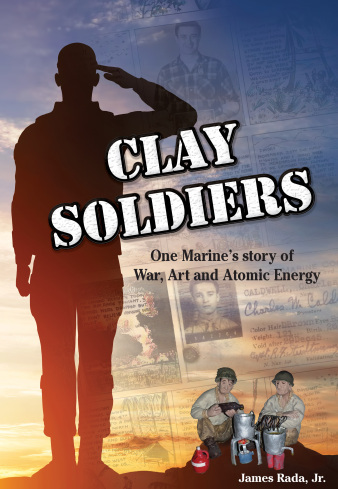
The cover of Clay Soldiers, which will be available this spring.
Author interview with Chuck Caldwell. Because of the number of interviews conducted with Chuck Caldwell between 2015 and 2016, they will be referred to as if they were a single interview.
Author interview with Chuck Caldwell.
Author interview with Chuck Caldwell.
Nebraska Tourism Commission, “History,” LincolnHighwayNebraskaByway.com (http://lincolnhighwaynebraskabyway.com/history) accessed August 26, 2015.
Civil War Trust, “Ten Facts About Gettysburg, July 1-3, 1863,” http://www.civilwar.org (http://www.civilwar.org/battlefields/gettysburg/assets/ten-facts-about/ten-facts-about-gettysburg.html) accessed August 26, 2015.
Author interview with Chuck Caldwell.
Fiftieth Anniversary of the Battle of Gettysburg, Report of the Pennsylvania Commission (Harrisburg, PA: William Stanley Ray, State Printer, 1913) p. 24.
Author interview with Chuck Caldwell.
January 28, 2016
In the days before smart phones

An old Bakerlite telephone. They were heavy, connected to the wall, and actually had to be dialed.
At 2 a.m. on January 5, 1958, the Fayetteville operator-assisted phone system went dead. The signal lights on the switchboards blinked out and would never again notify an operator of an incoming call. Paul Musselman, district manager for United Telephone, flipped a switch and a new system of circuits and lights sprang to life. Fayetteville had entered the modern communications age.
“We are sure our customers will like this new, faster and more versatile telephone service. It is easy to dial, and if customers follow the brief instructions which appear in the new telephone directory, they will enjoy fine results,” Musselman told the Public Opinion.
Residents could call directly between Fayetteville and Chambersburg, though long distance and information services still required operator assistance. The operators in the Fayetteville office of United Telephone at 250 Lincoln Way East had been allowed to transfer to job openings in Chambersburg or take early retirement.
United Telephone Company of Pennsylvania had previously been known as the Cumberland Valley Telephone Company of Pennsylvania based in Carlisle when it began offering phone service in 1915. Today, United Telephone is a subsidiary of CenturyLink, Inc.
The switch from operator-assisted phone calls to direct dialing had been planned and worked on for months. With help from the Stromberg Carlson Company, United Telephone had strung miles of wire, installed new equipment and added circular phone dials to each phone in the Fayetteville area. Phone directories with all of the 1,000-plus phone numbers also had to be printed up.
The switchover was not unexpected. Fayetteville was a growing area and the time had come where the existing phone system needed to be expanded to handle the additional capacity.
“Fayetteville, one of the fastest growing telephone exchanges in Pennsylvania, now serves over 1,000 telephones, an increase of approximately 300 per cent in ten years,” the Public Opinion reported.
When a customer picked up a phone handset, he now heard a hum instead of an operator saying, “Number please.” However, customers couldn’t simply dial the phone numbers they used to ask an operator for. The changeover in systems also required that each user get a new phone number.
All of the new phone numbers in Fayetteville began with FL and were followed by five digits. When speaking a telephone number like FL65032, a person would say, “I need Flanders 6-5-0-3-2.”
The call volume after the switchover was light at first, but then it quickly picked up. By the afternoon of the first day for the new system, it was handling double the volume of phone calls that the old system had handled.
Because direct phone dialing was a new concept to most residents, seminars were set up at the local school to provide instruction on how to use the new phones to both students and adults.
While many areas did not get direct dialing until the 1950’s, it had been around since the 1930’s, though only in smaller areas. By 1959, when Fayetteville got direct dialing for local calls, direct-dialing long distance had been around for more than seven years.
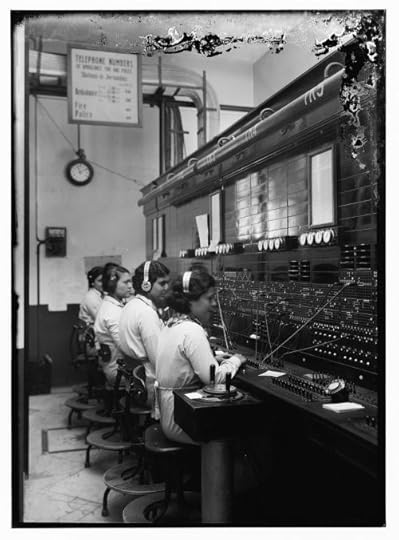
Many switchboard operators had to look for new work as direct dialing telephone service was introduced throughout the United States in the mid-20th century.


January 21, 2016
Where fairy tales came to life (Part 2)
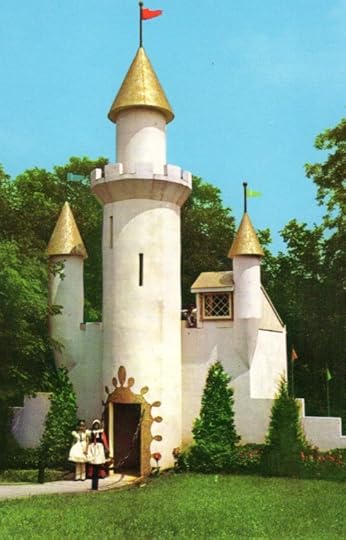
Rapunzel’s Castle at Fantasyland.
When Fantasyland opened in Gettysburg, Pa., it was immediate hit. The Gettysburg Times noted in 1959, “’Fantasyland,’ which is Gettysburg’s newest major tourist attraction, outgrew its facilities for handling crowds on the second day of its operation.” During the opening weekend, 4,500 people entered the park and that number quickly grew to 4,800 by the third weekend. Weekdays saw 500 to 700 people a day visiting the park.
“We never turned anybody away,” Jacqueline White said. She is the daughter of Kenneth and Thelma Dick who owned the amusement park.
A second entrance even had to be built to handle the weekend crowds.
White started working at the park when she was only eight years old. She played Little Red Riding Hood walking through the park and talking to the visitors. As she got older, she was assigned other duties. Even once she was married and working as a teacher, White and her husband still worked summers at the park.
“My husband, John, went to Dickinson Law School and worked at the park in the summer. I taught at Cumberland Valley High School and in summers worked at the park,” White said.
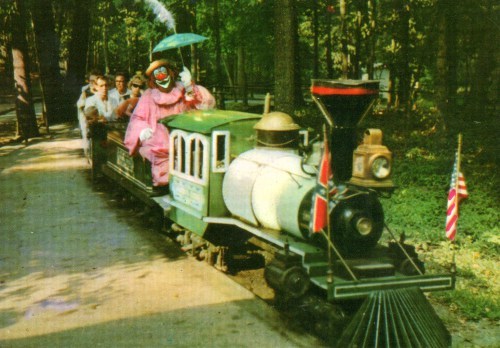
The popular train ride around the park at Fantasyland.
Like their sister, Stephanie and Cythia, also grew up working in Fantasyland doing a variety of jobs.
“My oldest sister was mentally retarded and my parents always said that part of their reason for doing Fantasyland was to give her something to do,” White said. “She loved it there. She was down there all of the time.”
The park was also the first job that a lot of people in the area had since they could start working there as young as 14. During the season, the Dicks employed three dozen people at the park. Throughout the life of the park, White says there were more than 200 different employees.
“I still get people coming up to me and saying that working at Fantasyland was their first job,” White said.
The park even had the distinction of being visited by First Lady Jacqueline Kennedy and her children, Caroline and John John, a couple times.
“The youngsters both had special things they wished to show their mother and sometimes, like most mothers with two small children, Mrs. Kennedy found herself being tugged in two different directions at once.”
President Eisenhower’s grandchildren also enjoyed visiting the park from time to time. In fact, Eisenhower’s granddaughter, Ann Eisenhower, worked at the park.
“Ann was Mother Goose when Jackie Kennedy came,” White said. “She talked to the kids and then ran down the stairs because one of the Secret Service men had been her Secret Service man, and she wanted to say, ‘Hi.’”
Not everything went smoothly at the park, though. Once the sky ride started making a funny noise, so the operator hit the emergency button and the ride halted with people still on it. The fire department had to come in with ladder trucks to get the stranded riders down.
White remembers another time when the squirrel monkeys and chimpanzees got loose from the live animal show.
“They ended up in Colt Park,” White said. “I remember the police running around trying to catch them. It was funny. I don’t remember how they did it, but they did finally trap all of them.”
The park also had its detractors who claimed that Fantasyland represented the over-commercialization of Gettysburg. During its first year in operation, the entrance to the park was opposite Meade’s Headquarters. Some editorials were written opposing the park’s location, but nothing could be done about it at the time.
Then in 1974, the National Park Service bought the property, but allowed the park another 10 years of operation. White said that the money was too much for her parents, who had grown up poor, to pass up.
Once the park was sold, the Dicks advertised through trade associations that the equipment and shows were for sale. Sports Paradise in New Concord, Ohio, eventually purchased everything. The park’s final season was 1980.
“They came in and cut the buildings apart, loaded everything on trucks and hauled it away,” White said.
You can still find some of the remnants of Fantasyland at other parks around the country. The carousel is at a park in Austin, Texas, and Mother Goose is at Storybook Land in New Jersey.
“I still go there sometimes just to see her,” White said. “They [the park owners] told me that people have come there and see her and recognize her as being from Fantasyland.”
Signs of the park locally are long gone and the Gettysburg National Military Park Visitor’s Center now occupies land that was once part of Fantasyland, but there are still plenty of people in Gettysburg who remember when fairy tale characters used to live in the woods.
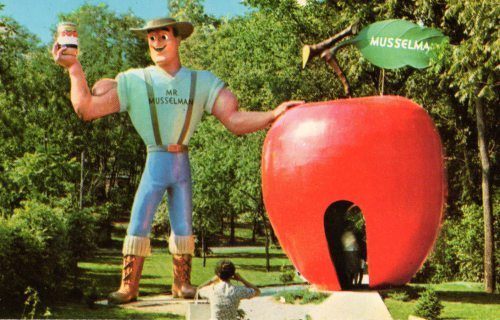
Another local business, Musselman’s Apple Products, sponsored this attraction at Fantasyland.














